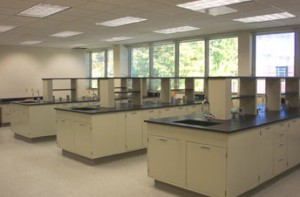- Home |
- Environmental and Water Resources
Environmental and Water Resources
Water is essential to our lives, and as a water resources engineer, you will deal with issues concerning the quality and quantity of water. You will work to prevent floods, to supply water for cities, industry and irrigation, to treat wastewater, to protect beaches, or to manage and redirect rivers. You might be involved in the design, construction, or maintenance of hydroelectric power facilities, canals, dams, pipelines, pumping stations, locks, or seaport facilities.
Environmental and Water Resource Engineering research focuses on quality and quantity of surface water, with areas of emphasis including computational environmental hydraulics, computational surface water quality modeling, sedimentation engineering, biofuels and their impacts, innovative water and wastewater treatment technologies, environmental security and restoration, and regional water resource management and optimization.
Current and recent research projects include the development of improved hydraulic and water quality models and application of those models to assess water quality variations, such as in the development of Total Maximum Daily Loads (TMDLs); studies of sediments, sedimentation and sediment oxygen demand and nutrient release (sediment diagenesis); and monitoring, assessment, prediction and management of water, sediments and nutrients at the field, watershed and regional scale. In addition, studies of alternatives for developing biomass for alternative fuel production and studies on biological fuel cells are underway. Management of synthetic, resistant, and hazardous materials has been a focus of research during the past decade. So has optimizing water and wastewater by reducing energy cost and controlling process and operation parameters. This work has recently translated to optimizing aquaculture systems to minimizing operational, management and harvest costs while improving product quality. Finally, current research also involves microbial ecology of engineered and contaminated environments.
Overview
Environmental and Water Resources Engineers plan, design, and build the systems that provide a safe and sustainable environment.
Environmental engineers translate physical, chemical, and biological processes into systems to destroy toxic substances, remove pollutants from water, reduce non-hazardous solid waste volumes, eliminate contaminants from the air, and develop groundwater supplies. They resolve problems of providing safe drinking water, cleaning up sites contaminated with hazardous materials, cleaning and preventing air pollution, treating wastewater, and managing solid wastes.
Water resources engineers will deal with environmental issued concerning the quality and quantity of water. They work to reduce point and non-point sources of pollution, manage floods, to supply water for cities, industry and irrigation, to protect beaches, and to manage rivers and reservoirs. They are involved in the design, construction, and maintenance of hydroelectric power facilities, canals, dams, pipelines, pumping stations, locks, and port facilities.
At Mississippi State University we educate engineers who will solve today's environmental challenges and those of the future by applying sound scientific and engineering principles. We perform research to enhance our student's education and to advance the state of the art in engineering tools and knowledge.
Our environmental and water resources emphases are:
- Computational Environmental Hydraulics
- Computational Surface Water Quality Modeling
- Sedimentation Engineering
- Waterborne Transportation / Navigation Engineering
Environmental and Water Resources Engineering at MSU is in the Department of Civil Engineering, College of Engineering. Our offices and labs are in Walker Hall.
Faculty and Staff
Benjamin S. Magbanua, Jr.
James L. Martin
Veera Gnaneswar Gude
John J. Ramirez-Avila
Dennis D. Truax
Partner Faculty and Staff
Vladimir J. Alarcon
William L. Kingery
Facilities
Our environmental engineering laboratories, and the equipment contained in them, are continuously being updated or renovated to provide a environmental lab infrastructure needed to support the research and teaching missions of the department. Space is dedicated to housing analytical instrumentation, e.g., gas chromatograph; ICP, AA/AE, and UV/VIS spectrophotometers; and total carbon analyzer. Other space include bio-engineering studies, microbial analysis and respirometry investigations, clean room conditions, and ultra-low temperature sample storage. Space in these lab facilities was also designed to graduate instruction and research, and undergraduate education. Specifics of this facilities are outlined below:
- Three separate laboratories (instrumentation, environmental and teaching laboratories) totaling over 3,000 ft2.
- Spacious laboratories and analytical instrumentation to manage large amount of samples. A range of sample storage options are in place, including: 4o.C walk-in storage room, cryogenic storage, -4o.C freezer.
- Equipment and apparatus for the full range of conventional environmental analyses providing gross organic analysis, gross solids characterization, nutrient species determination, primary and secondary water quality evaluation, and microbial delineation.
- Complete set of analytical instrumentation (e. g. gas chromatograph, ICP, AA/AE, UV/VIS spectrophotometers, total carbon analyzer, bioreactors and a full bioengineering laboratory component) are available for physical, chemical and biological analysis of soils, sediments and water samples.

Research
Field Work
- Development of SOPs for specific studies
- Water, sediments, soil samples collection
- Water quality monitoring
Sample Analysis
- Development of SOPs for all analysis conducted
- Use of accepted QA/QC parameters to comply with regulatory standards
Data Analysis
- Graphical and statistical analysis of data
- Report writing
Past and Current EWRE Research Activities.
Our Partners
We conduct research and teach in concert with our partners, seeking synergistic relationships and opportunities to use our technologies and knowledge in new areas. Some of our partners are listed below, along with links to their web pages.
Internal Organizations
- Centers - CAVS, EI (ICET), GRI, CAAD, WRRI, HPC2
- Engineering Departments - ISE, ME, ChE, CSE, ABE, ECE
- Other Academic Units – CFR, MAFES, A&S, & BCoE
External Agencies
- Federal - ARS – Starkville, ARS-NSL Oxford, DHS, ORNL, EPA, USAID, DoE, NRCS, USDA
- State - MDOT, MDEQ, MSDH, Mississippi River Basin Initiative (MRBI)
- Universities – ASU, AR State, ISU, JSU, NCSU, OU, LSU, UGa, UMiss, USM, UT-K
